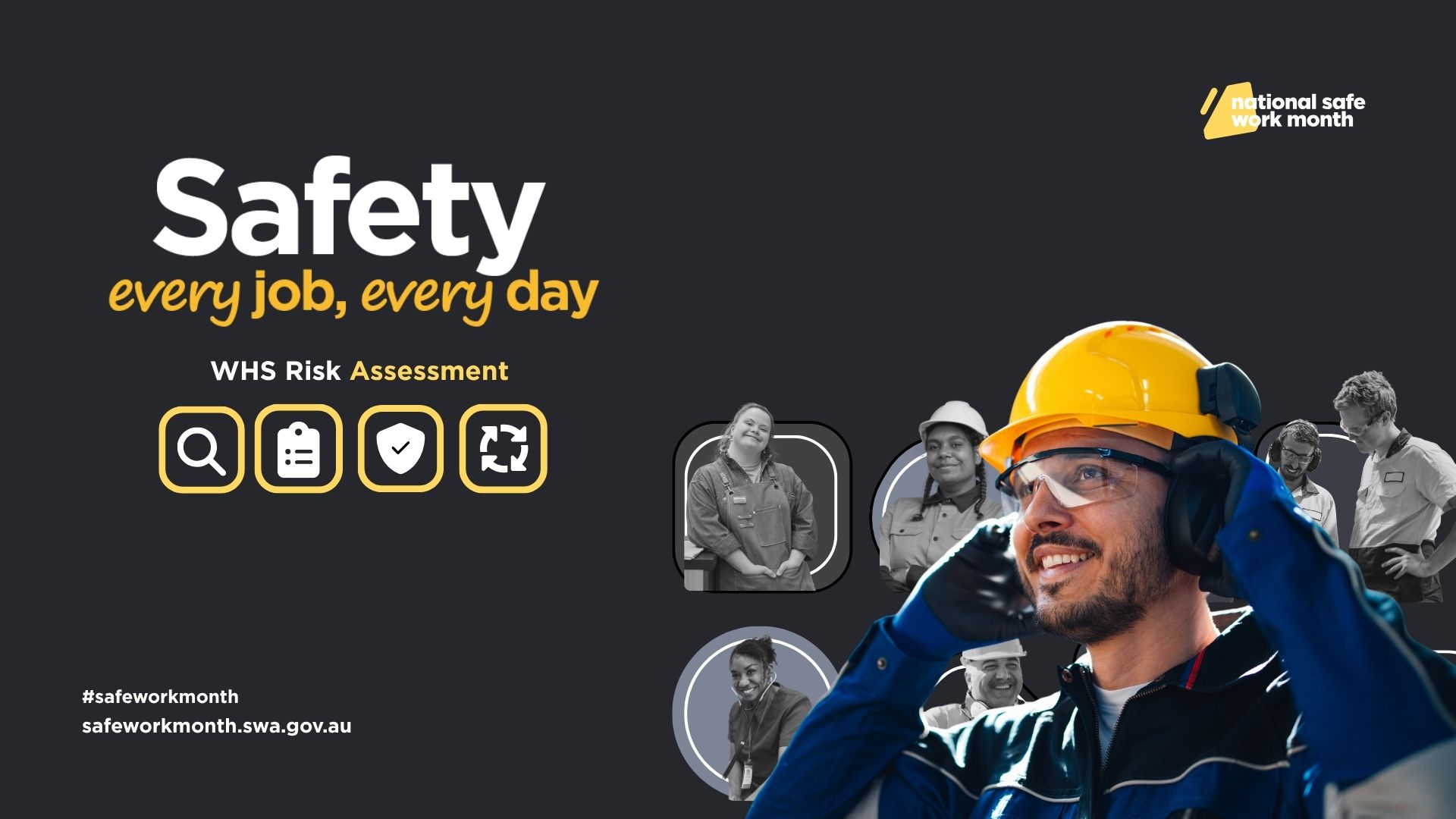OSHA Turns Up the Heat on Enforcement With New Heat Hazard Emphasis Program

Original article published by JacksonLewis
The Occupational Safety and Health Administration (OSHA) has a new enforcement initiative that will target one of the agency’s top priorities after the appearance of COVID-19: indoor and outdoor heat-related workplace hazards.
This National Emphasis Program (NEP) covers 70 “high risk industries,” and it will result in increased inspections and enforcement activity across the targeted industries just in time for spring.
The current administration has made clear it is concerned with the effects of climate change and how that affects America’s workforce. For years, the agency investigated complaints of heat stress and heat illness and investigated hospitalizations and fatalities resulting from heat-related illness in the workplace. These efforts have been mostly reactive. Now, OSHA intends to ramp up outreach and enforcement in an effort to eliminate heat hazards in the work environment with the new proactive initiative.
OSHA has no standard specifically addressing the hazard of heat (although it has published an Advance Notice of Proposed Rulemaking for “Heat Injury and Illness Prevention in Outdoor and Indoor Work Settings” in the Federal Register). It relies on the general duty clause (section 5(a)(1)) of the Occupational Safety and Health Act of 1970 to cite employers. The agency, however, is in the early stages of rulemaking for a heat illness standard, having issued an advanced notice of proposed rulemaking earlier this year to solicit information and data from stakeholders on the creation of a standard. The agency intends to hold a virtual public stakeholder meeting on heat on May 3, 2022, as part of the rulemaking process. Because the rulemaking process can take years and a final rule can be indefinitely tied up in federal court challenges, the agency has rolled out the NEP to achieve greater compliance in the interim.
Industries Affected
The list of 70 industries includes construction and non-construction employers and both outdoor and indoor workplaces. Non-construction industries include:
- Certain farming and agricultural industries;
- Bakeries and tortilla manufacturing;
- Sawmills and wood preservation;
- Various employers in the manufacturing sector such as petroleum and coal, glass, iron and steel mills, foundries, nonferrous metal production and processing, motor vehicles, aerospace products and parts, household and institutional furniture and kitchen cabinets;
- A variety of merchant wholesalers;
- Automotive parts, accessories, and tire stores;
- Lawn and garden equipment and supplies stores;
- Couriers and express delivery services;
- Local messengers and local delivery;
- Warehousing and storage;
- Lessors of real estate;
- Landscaping services, tree removal and tree trimming services;
- Waste collection and waste treatment and disposal;
- Nursing care facilities (skilled nursing facilities);
- Automotive repair and maintenance;
- Car dealers;
- Business support services;
- Investigation and security services;
- Office administrative services;
- Facilities support services;
- Educational support services;
- Restaurants; and
- Employment services/temp agencies to the extent they place employees with any host employer covered by the NEP.
The agency compiled its list of “high risk” industries from:
- Data from the Bureau of Labor Statistics showing high incidence rate of heat-related illnesses, elevated number of days away from work, or high numbers of severe cases of heat-related illnesses, as indicated by death or hospitalization;
- From OSHA severe injury reports made by employers;
- From industries with the highest number of heat-related general duty clause 5(a)(1) violations and Hazard Alert Letters over a five-year period (1/1/2017 thru 12/31/2021); and
- From industries with the highest number of OSHA heat inspections since 2017.
Increased Inspections
Under the NEP, OSHA will prioritize on-site inspections for complaints and for all employer-reported hospitalizations (i.e., severe injury reports) related to heat hazard, rather than using its informal rapid response investigations. Those are considered unprogrammed inspections. Most significantly, the NEP creates a programmed inspection list generated randomly by computer software using the employers within the industry codes covered by the NEP and within the jurisdiction of a particular OSHA area office. Area offices may also add establishments to the programmed inspection list based on current activity at a construction site, or other non-construction establishments, based on local evidence that heat exposures have occurred in the five years preceding the effective date of the NEP and workers’ compensation data, even if that establishment’s industry code is not specifically listed in the NEP.
OSHA will conduct heat inspections of the establishments on the list on any day when the National Weather Service (NWS) has announced a heat warning or advisory for the local area. In some parts of the country, that could be quite often, especially in the summer months. OSHA also will coordinate with the Department of Labor’s Wage and Hour Division (WHD) so that, when the weather is hot or a heat alert is issued for an area where the WHD is investigating, WHD is encouraged to make referrals to OSHA.
Taking a page from OSHA’s own COVID-19 healthcare-related playbook, the agency will be conducting follow-up inspections of employers it previously inspected and cited for heat-related hazards to ensure abatement and to monitor the effectiveness of OSHA’s enforcement and guidance efforts.
Expansion of Inspections
The NEP directs OSHA compliance safety and health officers (CSHOs) who are investigating employers for other purposes to open or refer a heat-related inspection when they observe any hazardous heat conditions, such as when recorded in the OSHA 300 Logs or 301 Incident Reports, or where an employee brings a heat-related hazard(s) to the CSHO’s attention.
Additional Outreach
Under the NEP, OSHA will increase compliance outreach efforts on heat priority days. These are defined as days when the heat index (a measure of how hot it feels when relative humidity is factored in with the actual air temperature) is 80 degrees Fahrenheit or higher. On those days, CSHOs in the field conducting inspections on unrelated matters will ask the employers about their heat-related hazard prevention programs. The area office will then assess the potential for heat-related serious illnesses and injuries for that employer and provide compliance assistance where needed.
Employers should evaluate conditions at their worksites and take steps to prevent heat-related illness among their workers. In particular, employers should keep in mind that employees who are required to engage in intense or continuous physical exertion, or who are exposed to high temperatures and humidity or direct sunlight, may be susceptible to heat-related illness. OSHA has resources to help employers and employees stay safe when working in high-temperature and high-humidity conditions. They are available on OSHA’s dedicated website.
What to Expect During a Heat Inspection
During heat-related inspections, the CSHO will review the employer’s OSHA 300 Injury and Illness Log and 301 Incident Reports for entries indicating heat-related illnesses. The CSHO will review records of heat-related emergency room visits or ambulance transport, even if hospitalizations did not occur, interview workers for symptoms of headache, dizziness, fainting, dehydration, or other conditions that may indicate heat-related illnesses, and determine if the employer has a heat illness and injury program addressing heat exposure.
OSHA also will document the heat index and additional weather data from that day, such as gathering heat alerts from the NWS and data from the OSHA-National Institute of Occupational Health (NIOSH) and saving a screenshot of the current weather and temperature conditions on a mobile phone or tablet. CSHOs will gather information about wind speed, relative humidity, a dry-bulb temperature reading at the workplace and in the shaded rest area, a wet-bulb globe temperature reading, note cloud cover, and identify activities that may be related to heat-related hazards. These can include working in direct sunlight, a hot vehicle, or areas with hot air, near a gas engine, furnace, boiler, or steam lines, the use of heavy or bulky clothing or equipment, including personal protective equipment (PPE). CSHOs will characterize job tasks performed by employees as moderate, heavy, or very heavy work, considering both average workload and peak workload and the duration of exposure during which a worker continuously or repeatedly performs moderate to strenuous activities in order to determine overall workload exertion.
Additionally, the agency has indicated that several OSHA standards may be applicable to address worker protection in hot environments, not just section 5(a)(1). These standards include PPE, sanitation, medical services and first aid, and recordkeeping. Moreover, where employers have more than one location engaged in the same or similar types of operations that may have employees who are potentially exposed to heat-related hazards, OSHA will send a company’s corporate office a letter informing them of any heat-related OSHA inspections, including sending relevant information on protective measures. This is significant for employers because the agency could use this letter as the basis of the employer’s knowledge of heat hazards at similar worksites if OSHA conducts any future inspections at those other worksites. Finally, where an employer has been inspected and cited at one location and those citations become final through settlement or after litigation, the final citations could form the basis of a repeat or willful violation at a different location in the future.
Factors OSHA Considers Evaluating Employer’s Heat Illness and Injury Prevention Program
OSHA will evaluate an employer’s heat illness and injury prevention program for the following:
- Whether it is written
- How the employer monitors ambient temperature and levels of work exertion at the worksite
- Whether there was easy access to cool water
- Whether the employer provides hydration breaks and other scheduled rest breaks
- Whether there is access to shade
- Whether the employer has procedures for acclimatizing new workers and workers returning from a break in their work schedules
- Whether the employer uses a buddy system to have employees monitor one another for symptoms of heat illness
- What scheduling controls and work-rest regimens the employer uses to limit employee exposure to heat, training of employees on identifying signs of heat illness, reporting signs and symptoms, first aid, how to contact emergency personnel, prevention, and the importance of hydration
Compliance Steps
Employers should conduct a job hazard analysis to determine the potential exposures to heat illness at its establishment. Then, implement a heat illness and injury prevention plan and train employees on all of its components. For monitoring the forecasted and current heat indexes, OSHA and NIOSH have created a Heat Safety Tool App.
It is essential for employers to train new or returning workers on heat-related hazards, including heat stress, gradually increase their workloads (acclimatization), ensure more frequent breaks as they acclimatize to ambient conditions, provide shaded or cool areas for breaks, keep employees hydrated and monitor them for signs of heat illness.
Violations of the general duty clause can be difficult to prove. There is still much to learn about the science of heat illness and how the various risk factors can affect an employee’s susceptibility to heat illness. Some information may be unknown to an employer, such as particular medications being taken by employees that may adversely affect their metabolic reaction to heat exposure. Historically, OSHA has relied on the NWS heat index chart as evidence of employee exposure to excessive heat. Recent litigation before the Occupational Safety and Health Review Commission (OSHRC), however, has highlighted the chart’s weakness and the lack of scientific basis in its origin. There are five heat-illness cases on appeal to OSHRC. The administrative law judge in these cases vacated OSHA’s citations. Thus, if an employer receives a general duty clause citation for heat hazard, it may have defenses.
Likewise, the NEP itself may be challenged by employers, as it is not clear that certain industries can or should be considered “high-hazard” for heat exposure. Are a car dealership’s employees exposed to heat hazards simply because they walk outside to show a customer a car? Are leasing agents exposed to heat hazards just by showing a property to a prospective renter? Are employees of business support services (which includes document preparation services, telephone answering services, telemarketing bureaus, private mail centers, copy shops, credit bureaus, and court reporting services) exposed to heat hazards? Would an indoor employer not on OSHA’s target list suddenly be subject to an OSHA inspection based on an employee complaint that the air conditioning stopped working for a time, an unforeseeable event?
If you need compliance assistance related to heat injury and illness prevention or need to know your options when OSHA conducts an inspection under the NEP or issues citations, please contact a member of the Workplace Safety and Health Practice Group or the attorney with whom you regularly work.





